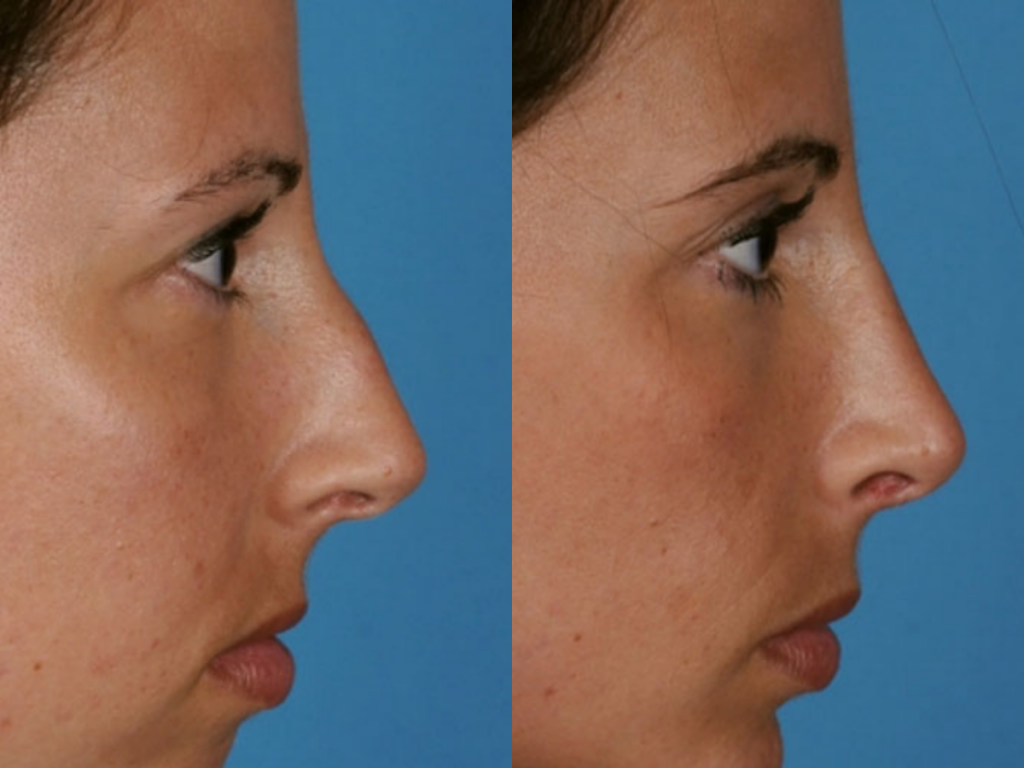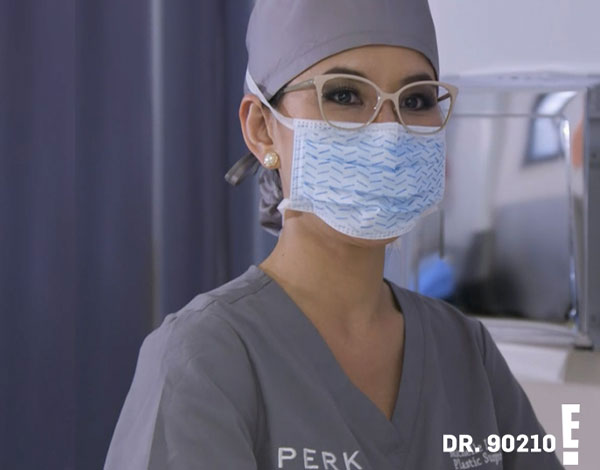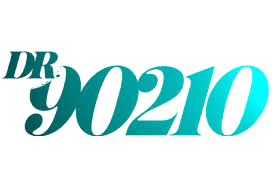Rhinoplasty 101: Everything You Need to Know about the Dorsal Hump
Actors Adrian Brody and Sarah Jessica Parker rely on their dorsal humps to win them unique roles, but you’re most likely not auditioning for the next quirky comedy.
As the center point of our face, the shape, and the size of our nose play a significant role in our appearance and the first impression we make. The largest and most prominent component of the nose is the nasal dorsum, a region of bone and cartilage that runs from between the eyes to the nose tip.
Whether due to genetics or injury, the nasal dorsum can become enlarged, humped, and aesthetically unpleasing. In the rhinoplasty specialist’s office, dorsal hump surgery is one of the most common requests.
Contact us at PERK to schedule your Beverly Hills Rhinoplasty consultation with Dr. Lee.
What is the Dorsal Hump?
Commonly referred to as the nose ‘bridge,’ the nasal dorsum connects the tip of our nose to our face. An enlarged nasal dorsum is frequently referred to as a dorsal hump, as bone or cartilage along the bridge forms a bump or pronounced nasal shape. A hump on the top of the nasal bridge is typically bony. A hump lower down consists mostly of cartilage.
The shape of our nose, and particularly the bridge, heavily influence the character of our entire face. As such, when the nasal dorsum develops a dorsal hump, it impacts the aesthetics of the face, particularly when viewed from the side.
How Important is Surgeon Experience in Rhinoplasty?
It’s crucial to seek out a highly experienced and specialized surgeon when considering rhinoplasty for two key reasons. Firstly, the nose’s intricate structure of delicate bones and cartilage demands meticulous handling to avoid complications. Beyond mere aesthetics, inaccurate surgery can lead to functional problems, such as breathing difficulties disrupting sleep or causing daytime struggles. Secondly, since the results will be “as plain as the nose on your face,” achieving the most ideal outcome is imperative. Choose an experienced and meticulous surgeon such as Dr. Michelle Lee to achieve the best rhinoplasty results.

Under the Dorsal Hump
A dorsal hump can result from genetic factors, the trauma inflicted during birth, or an injury. If the nose is broken or dislodged, it must be set carefully to heal correctly.
Many patients Dr. Lee have previously sustained nasal injuries which were never adequately addressed. When the nose heals abnormally, the bone or cartilage sets in a way that creates a large bump on the nose – a dorsal hump.
More dorsal humps result from genetic factors, and some families take great pride in them. If you have a dorsal hump like your mother or grandfather, getting it removed could involve some explanation. Still,
when others see how well a trim nose complements the other familial facial features, they may follow your example!
Dorsal Hump Surgery and Recovery
Whether your dorsal hump springs from injury or heredity, most likely, you’ll be scheduled for a “reduction rhinoplasty.” The surgeon first determines whether your dorsal hump consists mostly of cartilage, bone or both. Its makeup determines the surgical technique. A rhinoplasty surgeon can remove both bone and cartilage, giving you a straighter line from top to tip.
The biggest rhinoplasty challenges come when patients with thick skin need significant bone and cartilage removed. Only the most experienced rhinoplasty surgeons ensure ideal outcomes.
Recovering from rhinoplasty surgery involves minimal discomfort easily controlled with mild analgesics. You’ll wear a cast for six days and place ice on the eyes to keep swelling under control. Read in-depth about rhinoplasty recovery.
Non-Surgical Dorsal Hump Reduction
Looking beyond surgery, dermal fillers offer a viable option for addressing the dorsal hump. Non-surgical rhinoplasty, also known as liquid rhinoplasty, involves precise injections of filler above and below the hump to reduce its pronounced appearance. This technique fills gaps, smoothes contours, and more. Numbing agents allow a liquid rhinoplasty to be very comfortable and the recovery is brief and straightforward. However, it’s important to note that dermal fillers provide only temporary results, requiring regular touch-ups every 6 to 12 months. Many individuals with minor dorsal humps opt for this approach initially to gauge its effects and feedback from others. Patients unhappy with the results can get them reversed immediately with filler-dissolving injections, a safe and straightforward solution.
PERK Plastic Surgery patient before and after liquid rhinoplasty


Exploring the Best Dorsal Hump Surgery
A dorsal hump, whether inherited or inflicted through injury, does considerably affect our facial aesthetics. On both a personal and professional level, presenting the most attractive version of yourself to the world will instill you with confidence, positivity, and an enhanced sense of self-worth.
Fortunately, rhinoplasty performed by a specialist surgeon offers patients a reliable solution to fixing a dorsal hump. Whereas many generalist surgeons claim to achieve outstanding rhinoplasty results, the delicate nature of a rhinoplasty procedure should relegate it to only the top echelon of rhinoplasty specialists. Talk with Dr. Lee during your consultation to explore the best options for you.




